Lucio Fontana
ABOUT ARTIST
Lucio Fontana (b. 1899, Rosario de Santa Fé, Argentina – d. 1968, Varese, Italy) once wrote in The White Manifesto, “Matter, color, and sound in motion, are the phenomena whose simultaneous development makes up the new art.” This was the mantra of the newfound Spacialism movement, which called for art that reflected the modern world, a world increasingly viewed through the lens of science. In Fontana’s eyes the world was being broken down to its basic structure- matter, time, speed, light, color, forces. The forms of art had lost touch with the essence of where humanity was heading; art needed to become more dimensional, ephemeral, and elemental. In his Concetto spaziale series, for example, Fontana displayed paintings of bold reds and blues, monochromatic save the slashes he violently cut, while others had rhythmic holes poked throughout. As he lined the reverse of the canvases with dark gause, so that “darkness would shimmer behind the open cuts,” Fontana introduced dimensions of time and space in painting never experienced before.
Born in Rosario, Sante Fe to Italian immigrant parents, his relationship with art began by watching his father, Lugio Fontana, create sculptures. Lugio and Lucio soon moved to Italy, where father and son would work together on sculpture before Lucio moved back to Argentina in 1922 and began working independently. In 1926 Fontana first exhibited his work with the Nexus group, an artist collective that was forming in his hometown. He then attended the Accademia di Brera in Milan, where he eventually showed his first solo show in 1931 at Galleria del Milione. Already Fontana was interested in abstraction and expressionism, and as he traveled back and forth between Europe and South America, his ideas would blossom into the White Manifesto, the artists manifesto written by Fontana and his students at the Altamira Academy, which he founded in Buenos Aires, 1946. Throughout his career he would be exhibited globally, showing at the Walter Art Center, the Peggy Guggenheim Collection, Hayward Gallery, and the Venice Biennale, where he won the Grand Prize for painting in 1966.
Dadamaino
ABOUT ARTIST
Dadamaino (b. 1930, Italy - d. 2004, Italy) completed a medical degree before taking up art at the end of the 1950s. She frequented a group of young artists who followed Lucio Fontana and the Spatialism movement. Members of the group included: Piero Manzoni, Gianni Colombo, Enrico Castellani and Agostino Bonalumi.
Like her contemporaries in Italy, she made work that solely utilizes the forces of light, movement, and dimension within the canvas. A native Milanese, Dadamaino was a self taught painter who became an active figure in the Italian avant-garde. Her background in the sciences inspired her experimentative process of making art; she would investigate materials like plastic, metal, and canvases in a clinical manner, drawing out its most innate properties to make the work interact with the forces of nature. She is most known for her hole paintings, where she punctures superimposed layers of canvases.
Her connections to the Zero and Spatialist movements granted her several solo and group shows across Italy during the 1950s-60s. She joined the Milan-based experimental group Azimuth, founded by Agostino Bonalumi, Enrico Castellani, and Mazoni. She had her first solo show in 1958 at the Galleria dei Bossi in Milan to showcase her body of work titled Volumi. Her artist name was born in 1961 when press for a group show she was participating in, in the Netherlands, mistyped her name as Dadamaino. Her work was featured in the major Nul group exhibition in 1962 at the Stedelijk Museum, Amsterdam. The same year she joined the newly founded Nouvelle Tendance movement, in which she became particularly fascinated with the idea of movement, and brought a new era of optical-dynamism into her work.
Dadamaino’s works were housed in many notable collections: at Museo del Novecento, Milan, Musee de Grenoble, Grenoble, Centre Pompidou, Paris, Tate Modern, London, Hilti Art Foundation, Liechtenstein, Philadelphia Museum of Art, Philadelphia , Guggenheim Museum of Art, Venice, Kunstmuseum Reutlingen, Konkret, Reutlingen.
Pino Manos
ABOUT ARTIST
Pino Manos (b. 1930, Sassari, Province of Sassari, Italy) attended the Academy of Fine Arts “Cimabue” (along with Enrico Castellani and Vincenzo Agnetti) and “Brera”. Befriends Roberto Crippa, Gianni Dova, Marino Marini, Augustine Bonalumi and Bruno Munari but especially with Lucio Fontana adhering to the movement of Spatialism.
In 1962 he was called to London, along with the thirty most eminent artists in Europe to be the Manifesto “Europe 1962” Painting and Sculpture organized by New Vision Centre Gallery as the basis of the emerging European Union.
Manos participated in numerous solo and group exhibitions in Italy and other parts of the world; his works are in numerous private and public collections in Italy and abroad (three of his works are in the collection of Nelson Rockefeller in New York).
Manos moved permanently to Milan in 1968 where he currently lives and works.
Agostino Bonalumi
About Artist
Agostino Bonalumi (b. 1935, Vimercate, Italy – d. 2013, Desio, Italy) studied technical and mechanical drawing and exhibited his first works at the “Premio Nazionale Città di Vimercate” (hors concours) in 1948, when he was just thirteen years old. His first solo show was at the Galleria Totti, Milan in 1956 and he started developing the idea of what he would call “pittura – oggetto” (painting-object), following the idea to go beyond the confines of a canvas (created by Lucio Fontana).
He had strong links with the German art scene, and in 1970 he had his own personal room at the 35th Venice Biennale, in which he also installed some large environmental sculptures. There was a period when he worked and studied in the Mediterranean countries of Africa and in the USA. He lived in New York shortly and introduced his work at the Bonino Gallery.
Over the course of his career, he completed some major theatrical projects, like designing the scenery and costumes for the Partita ballet at the Teatro Romano in Verona, and creating the scenery and costumes for Rot at the Teatro dell’Opera in Rome. He died in Monza on 18 September 2013.
In October 2013, the Robilant + Voena Gallery in London presented the first retrospective specifically devoted to his work from the 1950s to the 1970s: “Agostino Bonalumi. All the Shapes of Space 1958–1976.”
Turi Simeti
ABOUT ARTIST
Turi Simeti (b. 1929, Alcamo, Sicily) is a self taught artist whom arrived to Rome in the 1950s, which was a flourishing artistic and cultural space in Europe at the time. He was an artist amongst several others, that wanted to capture a tranquil quality through monochromatic abstraction during the aftermath of World War II. His first artworks captured serial repetition using collages made of fabric, cardboard and paper. In the mid 1960's, he moved to Milan to join the Zero group, which included artists like Enrico Castellani, Agostino Bonalumi, etc. It was a turning point in his career, as he started holding solo shows in Germany and Switzerland, and later on in Brazil.
He's now very active at the global level and his works are part of important public and private collections throughout Europe and the United States.
Umberto Mariani
ABOUT ARTIST
Umberto Mariani (b. 1936, Italy) graduated from the Accademia di Brera under Achille Funi with honours. He was a Post-War multimedia artist and first studied the masters of the Romantic period, however later drawing influence from the Classical Greek statues from the streets of Italy he grew up observing. He was fascinated by the the folds of textiles and how they were carved out from the hard white marble, later developing into a desire to manipulate the material. In the 1970s he was widely exhibited in Europe at institutions such as the Palais des Beaux Arts in Brussels and the Musée Moderne in Paris. His work explores illusions of light and shadow created within the folds of fabric. He lives and works in Milan, Italy, and has become the subject of academic essays by virtually every critic in Italy.
Pino Pineli
About Artist
Pino Pinelli (b. 1938, Catania, Italy) was inspired by the slightly older Zero artists. Using innovative materials and utilizing outlines or geometric trails, he explores the essence of painting itself and the tradition of painting. He was one of the leading artists of Analytical Painting, defined by art critic Filiberto Menna. He moved to Milan in 1963 where he was influenced by Lucio Fontana, Piero Manzoni and Enrico Castellani as well as other artists. His work has been exhibited worldwide since the late 1960s, notably at the Institute of Italian Culture (London), the National Gallery of Modern Art (Rome), and the Venice Biennale in 1987 and 1997. He currently lives and works in Milan.
Vanna Nicolotti
ABOUT ARTIST
Vanna Nicolotti (b. 1929, Novara, Italy) attended the Brera Artistic Academy and Academy under the guidance of Achille Funi and Mauro Reggiani. Since 1959 she has been part of D'Ars Agency in Milan, and is one of the founders of D’ARS, the oldest contemporary art magazine in Italy that’s still regularly published.
She began her three-dimensional research taking after Lucio Fontana, exhibiting in London in 1964. Her work embodies a "Sensitive Geometry" (series of Mandala and the Doors), theorized by Brazilian critic Roberto Pontual. Since the end of the 1960's her attention has moved more towards optical and conceptual experimentation.
Since 1976, she’s been part of the Arte/ Genetica Movement founded in Lecce by Francesco Saverio Dodaro and since 1979 has participated in various Art Fairs, exhibitions and collections including Vicente Aguilera Cerni Museum, Villafames Castellon (Spain); Statford College, Danville (USA); Frank V. De Bellis Collection, State University, San Francisco (USA); Museum of Contemporary Art, Ibiza (Spain).
Cesare Berlingeri
ABOUT ARTIST
Cesare Berlingeri (b. 1948, Cittanova, Italy) is an Italian contemporary artist mostly known for his folded paintings. He started painting at a very young age, and in the 1970s in Rome, he worked for the theater and television as a set and costume designer. He held his first personal exhibition in Florence in 1975, at the AxA gallery, and in 1978 he had his first personal show in Rome at the Soligo Gallery. He presented his folded paintings to the public in 1990, after meeting Tommaso Trini at the personal exhibition Recent Works. These folded canvases were drenched in pure pigment, an idea he started in 1976. They were referred to as Piegature, an homage which comes from a childhood memory in which a small matte black cloth was worn by his mother around her neck as an amulet. In 2014, the National Gallery of Palazzo Arnone, in Cosenza, organized an important personal show entitled Compenetration, for which the artist designed his installation in relation to the works of several great masters of the 17th century. He lives and works in Taurianova, Reggio Calabria, Italy.
Paolo Scheggi
ABOUT ARTIST
Paolo Scheggi (b. 1940, Settignano, Italy – d. 1971, Rome, Italy) died very young in Rome in 1971 at the height of his career. Having many interests, he studied visual arts, architecture, fashion, poetry, and even theatre to eventually arrive at a conceptual and metaphysical approach to his work. Since 1961 in Milan he collaborated with Germana Marucelli in which he redesigned the tailoring studio. Being a contemporary of Castellani, Bonalumi, Manzoni, and Morandi, he was a forgotten force in the art scene of Milan during the 1960s, a time when Lucio Fontana's Spatialist experiments were burgeoning. Powerful galleries like Tornabuoni, Robilant + Voena, Mazzoleni Art and Cortesi Gallery, and the growing strength of Christie’s and Sotheby’s Italian sales, have guaranteed Scheggi’s success.
Nando Stevoli
ABOUT ARTIST
Nando Stevoli (b. in 1953) was inspired by Kinetic art and Op art and started "pleating" or folding canvas as refined monochromes. His works are stretched out (with a slight spatial expansion to the outside), depicting harmonious reliefs that create lights and shadows, on which the artist applies a lime layer. He took part of several collectives and solo shows in Italy; from 2016 he joined the Rigorismo group founded by Flavio Lattuada. He lives and works in Ferrara.
Giuseppe Amadio
ABOUT ARTIST
Giuseppe Amadio (b. 1944, Todi, Umbria, Italy) attended several artistry-technical schools. While attending those technical schools, he took design and graphic design courses overseeing industrial scale signage. For more than 20 years he worked as a studio engineer with Piero Dorazio and as an interior designer. From works characterized by a gestural-material poetry, his work has shifted in recent years to a conceptual matrix language through the production of monochrome sculptural canvases. He lives and works in Todi, Italy.
Angelo Brescianini
ABOUT ARTIST
Angelo Brescianini (b. 1948, Palazzolo sull’Oglio, Bergam, Italy). Inspired by architect Luca Pastorio, son of the famous painter Ezio Pastorio, he started producing woodworks with precious metal settings for artists such as: Cassinari, Fiume, Munari, Bonalumi and Kendra. His technique is very particular: bullets are shot onto an aluminum plate from behind, creating impressions of the impact. He took part in the Biennale in Padua with a painting entitled “Waiting Dolorosa” for which he received its first award. His works appear in private and public collections throughout Italy and abroad.
Stefano Brunello
ABOUT ARTIST
Stefano Brunello (b. 1967, Ferrara, Italy), was influenced by his father who was an esteemed wood restorer. Brunello began to use materials like wood, rock wool panels, and polystyrene, and continued to perfect and experiment with different materials throughout his career. He had his first exhibition in 1999 at the Ars et Labor gallery in Forli and Asiago in a collaboration that last until 2005. Since 2007 he exhibited at Claudio Bassi's IDEA Gallery, where he was approached by Poleschi Gallery and Lattuada Studio. Since 2011, he started taking part of the Rigorismo group show and has continued to exhibit in different fairs like the Affordable Art Fair, Art Verona, galleries and institutions. He lives and works in Ferrara.
Gianfranco Migliozzi
ABOUT ARTIST
Gianfranco Migliozzi (b. 1941, Macerata, Italy) graduated from the Accademia di Belle Arti di Macerata, and worked as a lithographer under Cav. Giuseppe Ciocca, an exceptional stone engraver. From 1963 to 1966 he resided in Trastevere, Rome, where he was influenced by Mario Schifano, an Italian painter and collagist of the Postmodern tradition. In 1967, Macerta attended the gallery in Brera, Milan, frequenting pubs and the Academy where he met Agostino Bonalumi and Turi Simeti. From 1980 onwards, he has developed extroflexe canvases with musical instruments; since 2015 he's been part of the Rigorist Movement founded by Lattuada Studio and currently lives and works in Milan.
Giacomo Balla
ABOUT ARTIST
Giacomo Balla (b. 1871, Turin, Italy – d. 1958, Rome, Italy) is the son of a photographer and studied music as a child. After the death of his father at age 9, he gave up music and began working in a lithograph print shop. By age 20, he decided to study painting at local academies, and several of his early works were shown at exhibitions. He moved to Rome in 1985 where he worked for several years as an illustrator, caricaturist, and portrait painter. In 1899 his work was included in the Venice Biennale and in the Esposizione internazionale di belle arti at the galleries of the Società degli Amatori e Cultori di Belle Arti in Rome. He adopted the Futurism style, influenced by Filippo Tommaso Marinetti, creating a pictorial depiction of light, movement and speed.
He was part of the "Futurist Manifesto" that started in 1910, and began to design Futurist furniture, as well as so-called Futurist "antineutral" clothing.
Balla's studio during World War I became a meeting ground for young artists. In 1935, he was made a member of Rome's Accademia di San Luca.
Umberto Boccioni
ABOUT ARTIST
Umberto Boccioni (b. 1882, Reggio Calabria, Italy – d. 1916, Verona, Italy) was an influential Italian sculptor and painter and helped shape the revolutionary aesthetic of the Futurism movement as one of its principal figures. His roots started in Neo-Impressionist painting, where he was first drawn to portraits and landscapes. Later as he encountered Cubism, he developed a style that matched his critical and rebellious nature, characteristics that would contribute substantially to the development of the Futurism movement. In 1912 he exhibited some paintings together with other Italian futurists at the Galerie Bernhaim-Jeune, and the following year returned to show his sculptures at the Galerie La Boétie: all related to the elaboration of what Boccioni had seen in Paris, they in their turn probably influenced the Cubist sculptors, especially Duchamp-Villon.
In May 1916 Boccioni was drafted into the Italian army and died during a cavalry training exercise. He was just 33 years old but left behind a legacy deeply rooted in the Futurist movement through his seminal texts and artwork. His works are held by many public art museums, and in 1988 the Metropolitan Museum of Art in New York organized a major retrospective of 100 pieces.
Picasso
SELECTED IMAGES

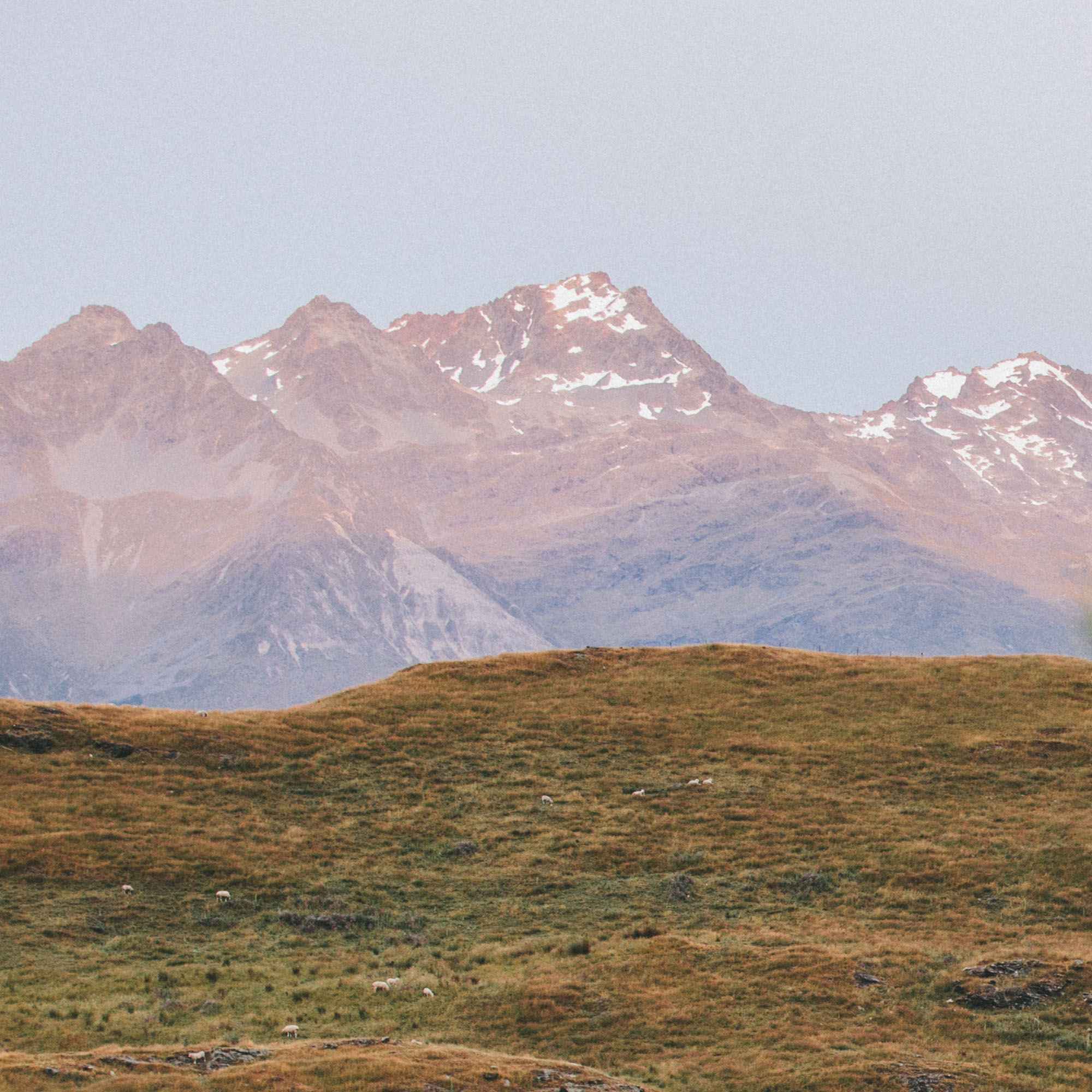

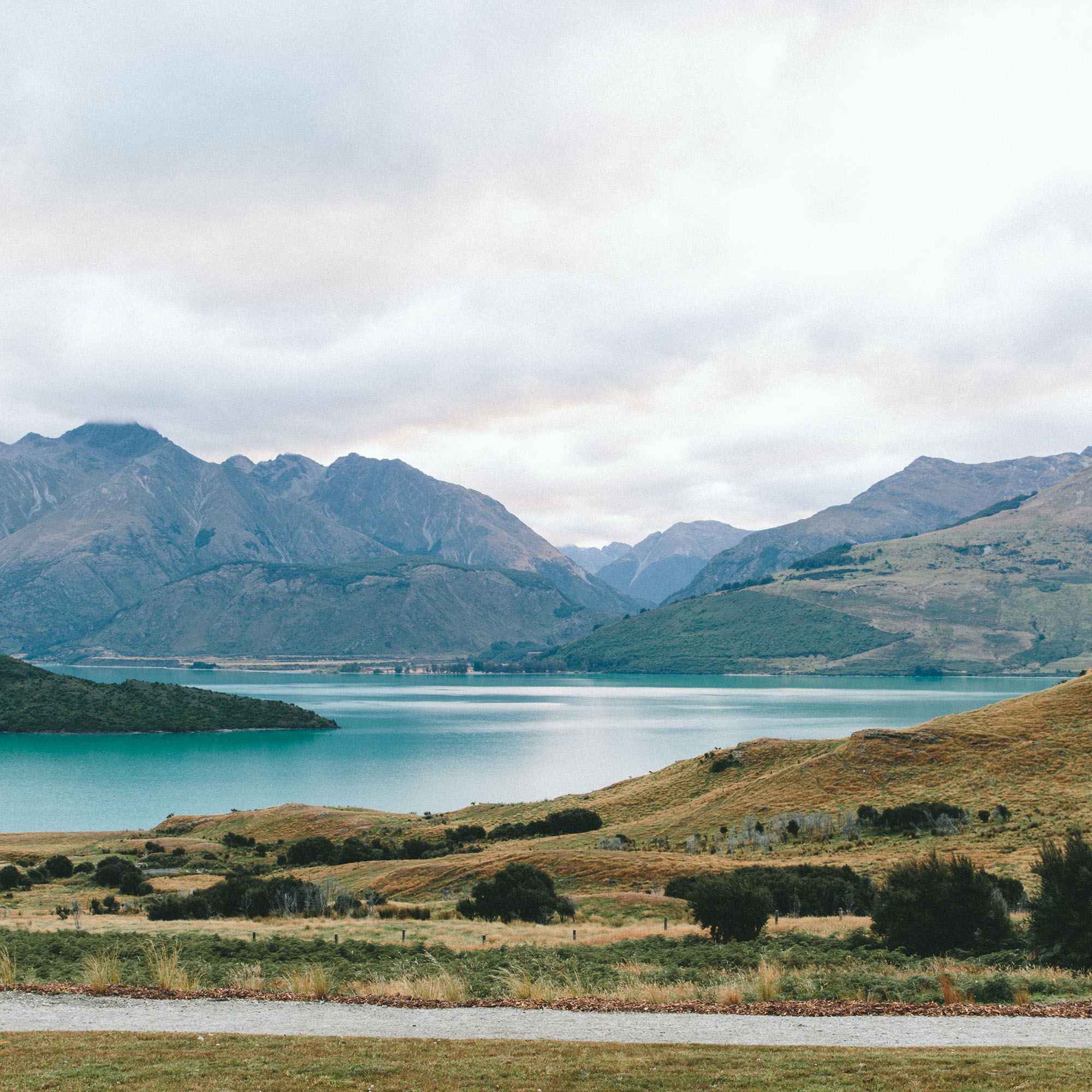
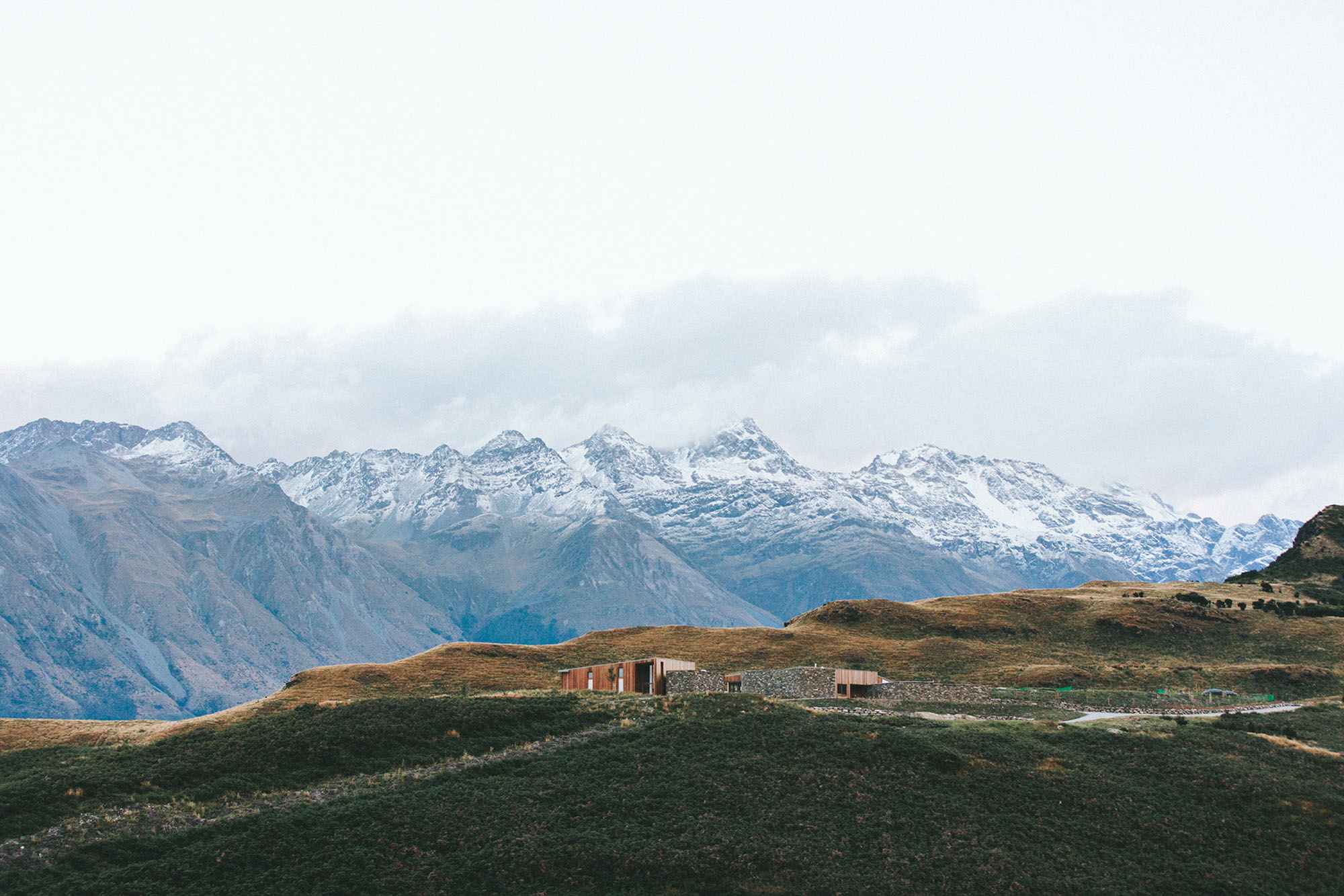
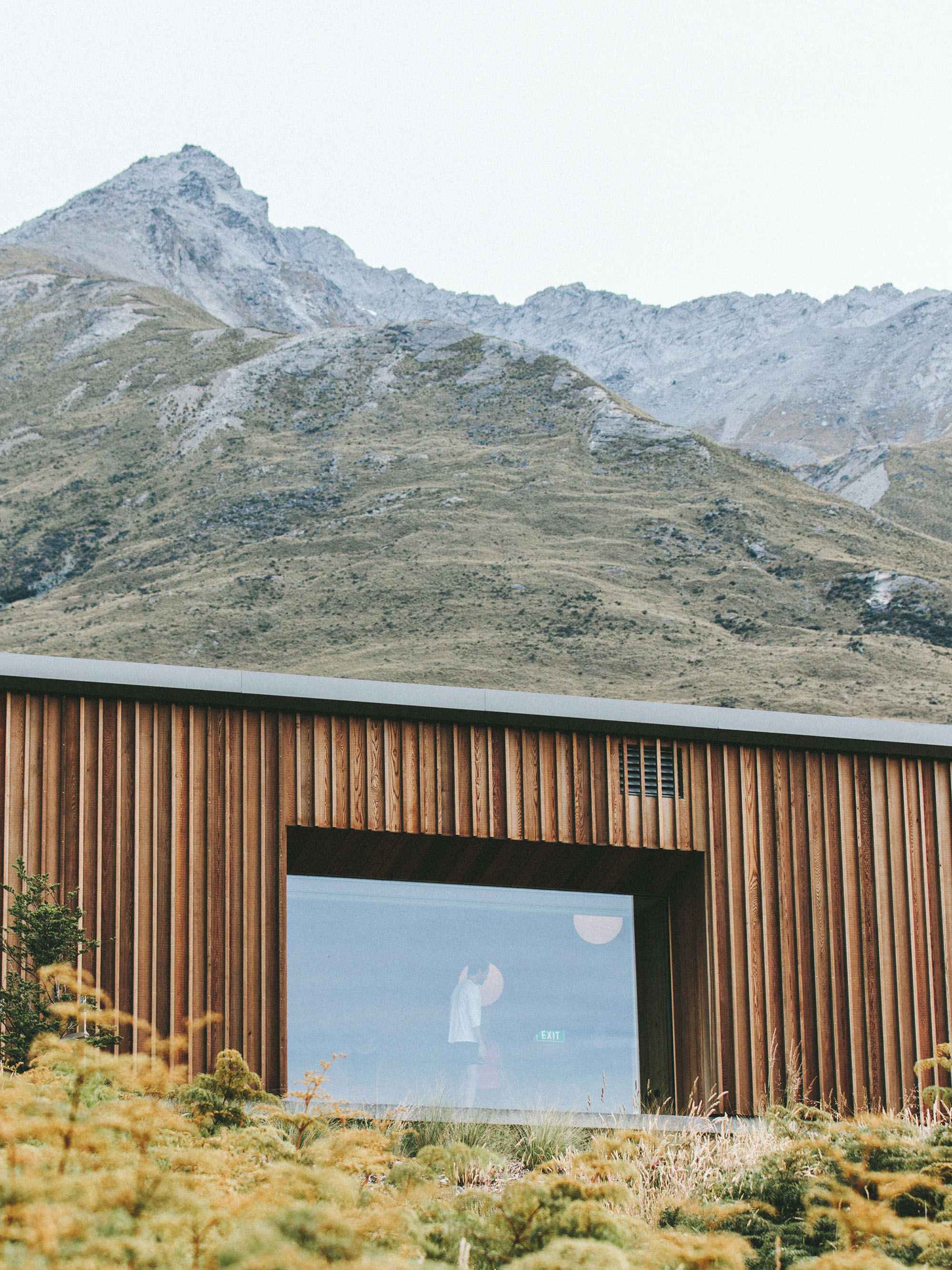

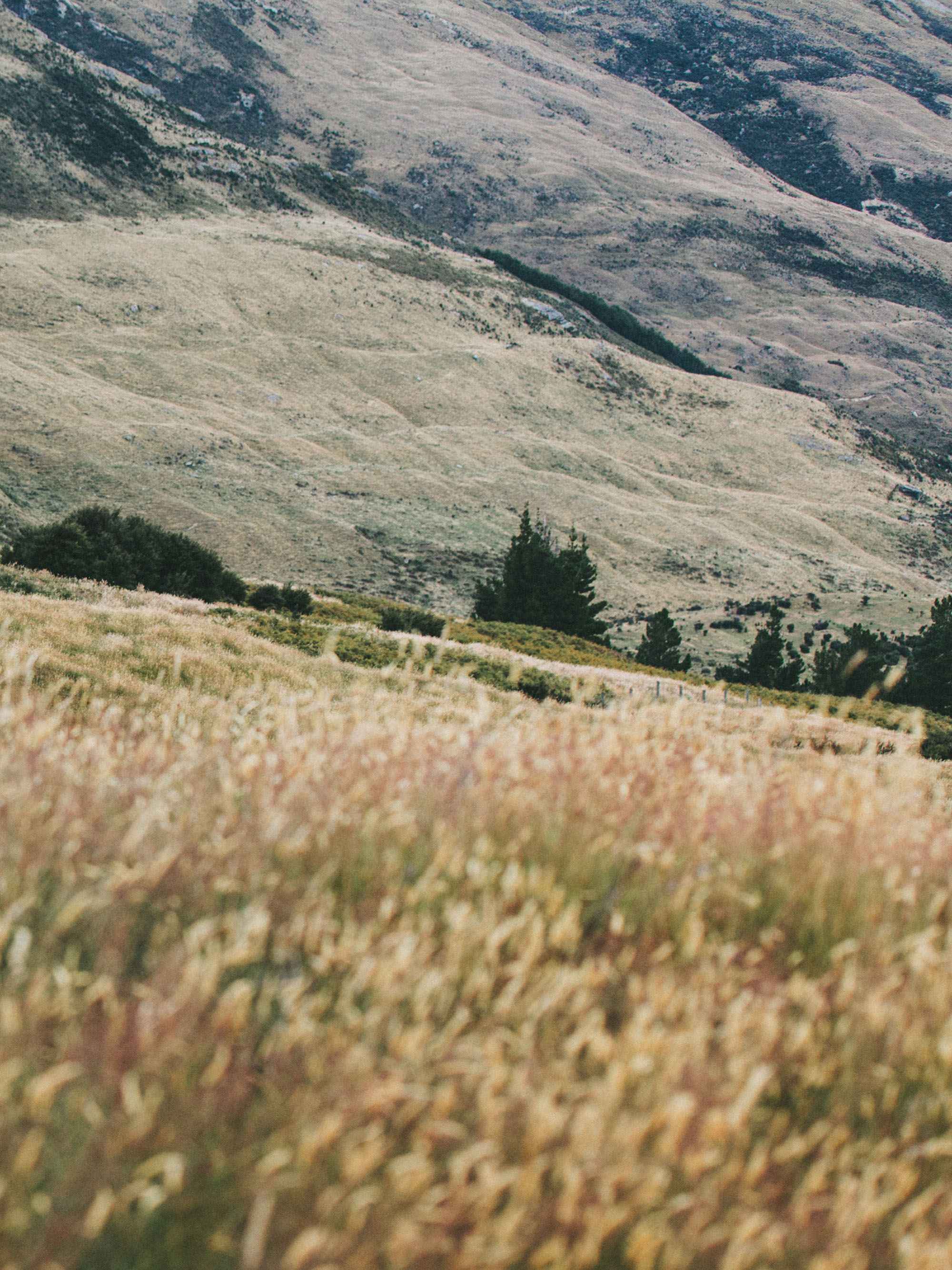




PRESS RELEASE
Picasso
Giorgio Morandi
SELECTED IMAGES












PRESS RELEASE
Giorgio Morandi
Oogie
ABOUT ARTIST
Oogie (b. Seoul, Korea) received a B.F.A. from Hongik University and a M.A. in Studio Art from New York University.
When she left for New York to study, South Korea was locked in a conflict between a military-led dictatorship and the civilians who demanded free democracy. However, after the regime’s demise, when she came back to Korea to teach “Color Theory” at a college in 1994, she realized the male-dominated authoritarian society was still the status quo. So she decided to go back to NY in 1997 to continue to be an artist.
Oogie’s work comments on the patriarchal nature of Korean society. Oogie grew up in post-war Seoul, and though men and women are born equal, she saw femininity being chastised in South Korea’s military dictatorship. As women there lived in the social background, she witnessed an overall loss of identity and value in motherhood. Her work contains what she calls “the mother’s voice,” to illuminate the patriarchy and sexism present in society. A daughter herself, she was influenced by her own mother to pursue art by watching her make clothes in her fashion studio. Chalk, fabric, and sewing were therefore always familiar materials in her life, which she uses to explore motherhood as a concept.
Oogie has had many solo shows and participated in several group shows in the USA, Korea, China, Italy and Paris.
Giorgio De Chirico
SELECTED IMAGES












PRESS RELEASE
Giorgio De Chirico
Renè Magritte
SELECTED IMAGES












PRESS RELEASE
Renè Magritte
Andy Warhol
SELECTED IMAGES
PRESS RELEASE
Andy Warhol
Mimo Rotella
ABOUT ARTIST
Mimmo Rotella (b. 1918, Catanzaro, Italy – d. 2006, Milan, Italy) was considered an important figure in post-war European art and represented Italy in the 1964 Venice Biennale. He began experimenting with geometric abstractions in the 1950s and later moved out of his studio where he experimented with posters, canvases, and compositions out of mass media imagery. He called these "double décollages." Through his collage work, he became associated with Raymond Hains, Jacques Villeglé and François Dufrêne—together known as Les Affichistes. He later became a member of the French Nouveau Réalisme, founded in 1960 by art critic Pierre Restany. He died in January 2006 in Milan.
ORLAN
ABOUT ARTIST
ORLAN (b. 1947, Saint- Étienne, Loire) is a French artist born by the name Mireille Suzanne Francette Portes. She adopted the name ORLAN in 1971, which she always writes in capital letters : "ORLAN." Her subsequent career has been a series of rebirths and triumphs of will over technology and a transformation of her body. She's had numerous plastic surgery operations to create what she calls "carnal art." (From 1990 to 1995, she underwent nine plastic surgery operations) In one operation she had her mouth altered to imitate that of "Francois Boucher's Europa," and in another had her forehead changed to mimic the protruding brow of Da Vinci's Mona Lisa.
Her work has been called feminist as it questions the status of the body in society, and she continually investigates the political, cultural and religious pressures that the female body is subjected to.
She lives and works in New York, LA, and Paris.
Angiola Churchill
ABOUT ARTIST
Angiola Churchill (b. 1922, New York City, NY) is a professor emeritus of New York University and the former Head and Chair of the Department of Art and Arts Professions – 1975-2005. She was the founder/director of the New York University Studio art program in Venice, Italy – 1974-2006; and co-director of ICSA, the International Center for Advanced Studies in Art, 1970-1980. Churchill has also pursued a successful career as an artist exhibiting both in the United States and abroad. Since 1953, she has had 60 solo shows in America and elsewhere in such prestigious spaces as the Museo di Palazzo Fortuni, Venice, Italy; Palazzo di Diamonti, Ferrara, Italy; Palazzo Reale, Naples, Italy; Palazzo Ducale, Mantua, Italy; Neuberger Museum of Art, State University of New York, Purchase, New York; In addition she has participated in more than 54 group shows, biennials and art fairs. Churchill is often associated with monumental installations executed in paper. These environments, which consist of undulating and rhythmic patterns, are inspired by natural forms. Their layered parts hanging freely in space are infused with direct and diffused light creating opaque and transparent passages as well as a play of light and shadow effects. The metaphor of the garden has been a central focus of this work resulting in a series of idyllic spaces for contemplation and meditation. Another genre pursued by Churchill utilizing paper are drawings again influenced by nature as well as a sophisticated and profound knowledge of the various aspects and directions of modernist art, particularly abstraction. These have been shown in a way that exploits the transparent qualities of her media as well as in series occupying entire walls.
Lucia Pescador
ABOUT ARTIST
Lucia Pescador (b. 1943, Voghera, Italy) graduated at Art Academy of Brera in Milan, she also taught in an Art School, Lucia Pescador has always preferred drawing, working on issues related to nature, culture and art . She began to exhibit in 1965 at Arte Centro Gallery in Milan, now Lattuada Studio. She was a member of the Group Metamorphosis in the '70s - '80s working alongside colleagues Benedini, Bonelli, Sterlocchi. She showed her ‘80s works in the exhibition titled "A ship for Kazimir (Malevich) by Lea Vergine in Stelline Refectory in 1992.
By the '90s, she began collecting and cataloging images for entries on art and culture of the 20th century, entitled "Inventory of the twentieth century with left hand" that goes beyond 2000. This “Inventory” includes: Art, Vases, Africa, Hotel du Nord Hotel Meublé-Berlin, Tokyo, Architecture, The Papyrus of Ani, Iconostasis, Crete, Puzzles, Atelier Stieglitz, Bauhaus. A lot of them were exhibited both in Italy and abroad: on 1994 there was "Craftsman" exhibition with drawings, hats, vases, carpets in Lattuada Studio, Milan; during the same year she organized “Papyrus of Ani"(designed on tables of logarithms, with mountains and vessels) in Open Space Gallery in Amsterdam, then the show was transferred to the Egyptian Academy in Rome in 1996.
Another exhibition, "Hotel du Nord", took place in 1996 in Trieste at Lipaniepuntin Gallery and it was about internal architectures and comics; after a few years, in 2000, in the same gallery, she exhibited "Puzzles". In 1998, organized "Vases Pitchers Nature" in Swan Gallery in New York and in 1999. She exhibited "Vases architecture” at the Italian Cultural Institute of Los Angeles. "Heart of Europe" opened at Ramba Gallery in Los Angeles and it is the story of the historical Vanguard, drawn on old photos of landscapes and portraits. “Atelier Stieglitz” depicts the interior of the famous gallery with drawings of African masks and motifs of the Vanguards with old photos as media: the cycle is shown at the Centre Rops in Brussels in 2000," Africa "is presented during the same year at Lattuada Studio. The exhibition that concluded the 90s, was entitled "Time Change", held at the Abbey Olivetana Rodengo Saiano, edited by M. Corgnati and R. White, and holds most of the Inventory.
The artist continues to work on new entries of her Inventory such as "Black Japan" and "Yellow China," staged by Corraini in Mantua in 2003; "Ambulants between West and East," edited by A. Veca for Spazio Bazar in Milan in 2005: this show was later transferred to Camalanjan Gallery in Mumbai in 2006 and then to Expocasa in Shanghai in 2007.
She worked on two other voices, "Rome Cinema '' and "East". "Hotel Meublé-Berlin'' and "Bauhaus" were presented in Cagliari and at the Stand Museum in Siegburg in 2005 and 2007, "Caravanserai,however, was exhibited in Vigevano and Trieste in 2008. She presented the 20 meters long installation which describes the ancient Chinese and European landscape, during the Far East Visionary Film in Udine in 2009.
During 2010, born the project “Wundernachtkammer'', prepared in a room of the Napoleonic wing of Palazzo Te in Mantua, with masks, objects, drawings and photographic images, displayed on acetate, of the city and its monuments at night, with texts by G. Belli; after that Lucia Pescador made an intervention, titled “Löwenstein Suite – Nocturne” at Trezzo castle curated by Alberto Crespi. In the autumn of 2010 she exposed in the Scale Mobili Group, in part with Angiola Churchill, Ali Farhazad, Annamaria Gelmi, Giuliano Giuman, Silvestro Lodi, Gianni Robusti, at Lattuada Studio, with texts by Cristiana Curti and Massimo Donà. After that there was a show curated by Cristiana Curti The rule of the right hand at Museo MAGI in Pieve di Cento.
In 2011 there was Wundernachtkammer lost dream at Museo della Carale in Ivrea for a group show curated by Lorena Giuranna.
The show, The deviation of the shadow in 2012 with Bonelli and Comenduni in Quinto Cortile Gallery in Milan with an introduction by Kevin McManus.
In the same year there was a Wundernachtkammer for Ettore Sottsass in Lithos Gallery in Como introduced by Elena di Raddo with the catalog by Andrea Branzi. During 2013 there were four group shows in private and public places: 1966 – 76 Milano and the great hope years in Bocconi University in Milan curated by Francesco Poli.
After that The journal goes on, in MAGA Museum in Gallarate and then in Triennale Museum in Milan. Wild spring, in Revoltella Museum in Trieste curated by Marco Puntin and on November 2013 in Spazio Oberdan in Milano Rite, Costume and Paradox. The Journey of the Bread curated by Susanna Vallebona.
ABOUT ARTIST
An artist with an unknown face: woman, man, young or old? He/she works with industrial discarded materials, in particular car radiators. He/she reached public and critical acclaim through participating in exhibitions and fairs in Italy and abroad with the Minotauro Gallery, Palazzolo sull'Oglio (BS) and Lattuada Studio of Milan. Recently his/her work was presented by the well-known critic Vittorio Sgarbi.
Rigorismo
SELECTED IMAGES










PRESS RELEASE
Raymundo Sesma
ABOUT ARTIST
Mexican artist Raymundo Sesma (b. 1954 Mexico) has been on a mission to create “social architecture” since the early 90s. During the past decade, he has transformed and enlivened a number of banal, overlooked, and forgotten architectural structures that would otherwise be languishing in parts of southern and western Mexico. The local inner city youth from these parts who volunteer to help Sesma fulfill these artistic visions are given the opportunity to effect change within their own neighborhoods while learning firsthand that art isn’t always framed and hung on museum walls.
Sesma has lived and worked between Milan and Mexico since 1980. His works can be found in such collections as The Metropolitan Museum of Art, N.Y., The Victoria and Albert Museum, London, Musee d’Art Moderne, Paris, The National Museum of Modern Art, Tokyo, Museo de Arte Moderno, Mexico and la Dundacao Calouste Gulbenkian, Lisboa. He has participated in the Venice Biennale twice, and was chosen to represent Mexico in 1993. Among the shows from this past decade we can mention Nova Totius Terrarrum Orbis, Kunstmuseum, Bonn, ‘95, Epiphaneia, Museo de Arte Carrillo Gil, Mexico City, ‘95, and The Kemper Museum of Contemporary Art and Design, Kansas City, USA, ‘96, La Cite Ideale, Galerie Les Filles du Calvaire, Paris, ‘98, Iconoclasta, Lattuada Studio, Milan, ‘99, De Constructio, Galeria Nina Menocal, Mexico City, 2000, Pardo Lattuada Gallery, New York, 2001, Meditativo, 1989-2003, Museo de Arte Moderno de la Ciudad de Mexico, Causa y Efecto, Galeria Nina Menocal, 2004, Advento un proyecto de arquitectura social, Umeleckoprumyslove Museum V Praze, Prague, 2005, and Rojo por una democracia directa IX, MyOwnGallery, Milan, 2006, Balelatina, 2007, Basiliea Swiss.
Christy Karacas
ABOUT ARTIST
Christy Karacas is an American artist, filmmaker and musician well-known as the force behind the cult hit and highly influential animated television show SUPERJAIL! Having emerged from the seminal art scene in Providence, RI in the early aughts, Karacas became known for his tightly hand-drawn animations, SPACE WAR and BARFIGHT, while simultaneously charting a path to commercial success with work such BALLMASTRZ:9009, BALLMASTRZ: RUBICON and music videos for influential bands MGMT, ROYAL BLOOD, and LES SAVY FAV.
Drawing on his extensive background as a time-based multidisciplinary artist and performer, Karacas’s work takes the excitement of live experience and kinetic visuals of animation and distills them into static, singular images. Each piece invites viewers to immerse themselves in a moment where time stands still, yet the energy remains.
His work has been shown in screening and festivals around the world including the Annecy International Animation Festival, Ottawa International Animation Festival, P.S.1 Contemporary Art Center, Deitch Projects, Galleri Loyal, Tribeca Film Festival, MTV’s Cartoon Sushi, Cartoon Network, Adult Swim, Vice and Playboy Magazines. He lives and works in Providence, RI where he received his B.F.A. at the Rhode Island School of Design (RISD) and now also enjoys teaching.
Jacob Paik
SELECTED IMAGES
PRESS RELEASE
Jacob Paik is an emerging artist, and a recent graduate of Cornell University, Ithaca, NY. Earning bachelor’s degree in Fine Arts, he was recognized with exceptional artistic achievements and received the Elsie Dinsmore Popkins Memorial Painting Award, and “Best in Show” Post-Baccalaureate Award. Since, Jacob has shown in group exhibitions and international art fair, and recently had his first solo exhibition in New York City.
Jacob is compelled by visual representation of human nature and its origin. He works to create and confront visions that can [finally] talk back to him. Until then, he considers rests are soliloquies that reveal himself to his vision. In attempt to visualize the concept, he uses the most basic elements of visual language for their intrinsically theoretical existence. They all come from same origin but their hierarchy leading to higher dimensions shows something revealing about develop- mental traces of cognition. With interdisciplinary artistic skill sets and contempla- tive attitude toward reality, he creates objects that stand for physical evidence of un-exploring his consciousness.
Roberto Kusterle
ABOUT ARTIST
Roberto Kusterle mixes fragments of mythology from the history of humanity, combining the most classical and remote myths with contemporary more abnormal bizarre ones. In so doing he brings alive a world of mutation that becomes almost an atlas of transformations. Kusterle seems to reflect about today’s world, where the concepts of birth, life, ageing, and death are changing rapidly, and he knows that the very definition of normality could change, conditioned by models imposed by the genetics industry and communication media. Also for this reason one of the elements of his work is an invitation to reflect on a world that increasingly embraces the biogenetics industry to modify, alter and build its own image. But Roberto Kusterle is a cultured author who appears to adopt a poetic attitude towards the common terror of abnormality; Kusterle’s images invite us to question ourselves about the sense of our existence: what is it that makes us what we are? And above all, if our body really can be destroyed and re-built by technology, what implications does this have on our identity as human beings? One senses a profound knowledge of the history of art in the works, views and frames of Kusterle, and in an arid cultural landscape, scarred continuously by attacks on beauty, his work is immediately distinguishable because it features an aesthetic touch that creates beauty rather than fear. What makes him so interesting is his very use of aesthetics to develop an ethical position on one of the major questions of our times, i.e. the different way of conceiving life and nature under the furious blows of technology, as well as his recourse to the visionary nature of art, always fecund and powerful in producing ‘different’ beings from humans. Kusterle prefers to create an artificial world in which hybrid creatures and human beings live together in perfect aesthetic harmony placing his work between beauty and ideology.
Andrien Lanfranchi
SELECTED IMAGES


PRESS RELEASE
…
Noah Greene
SELECTED IMAGES





PRESS RELEASE
…
Ruonan Yan
SELECTED IMAGES



PRESS RELEASE
…
Armando Marroco
ABOUT ARTIST
Armando Marrocco (b. 1939, Galatina, Lecce, Italy) began his early career as an apprentice in some artisan shops where he was fascinated by the manual skills and various materials involved. He was inspired by the interweaving of simple materials like wood, white corrugated cardboard, canvas, etc. In the late '50s and early' 60s the artist developed the series Bianco Mediterraneo , informal works that reveal a special attention to the role of matter and materials, often assembled together.
Marrocco revealed an interest in environmental installations and performance art as well, experimenting with body language (Environment Man , Earth, Sky, Sea, Man) alongside other forms of communication ( Sconcerto ). The turning point in his artistic life took place at the end of 1962, when he took Lucio Fontana's advice to move to Milan, a city full of artistic flourishing. He began exhibiting at some of the most renowned Milanese galleries and came into contact with Pierre Restany, founder of Nouveau Réalisme. From this moment he began to exhibit at a large number of institutions, including the 2010 Venice Biennale.
Giuseppe Mastromatteo
ABOUT ARTIST
Giuseppe Mastromatteo (1970) has been working as an artist for fifteen years. Following important work experiences in the music industry as a sound engineer and musician, he approached the world of art choosing photography as his expressive medium; he continued his studies, graduating from the Accademia di Comunicazione di Milan with a degree in Art Direction. Since 2005, his works have been at the centre of critical attention, subject to in-depth articles in art catalogues and trade journals. His works have been exhibited in art galleries, museums and trade fairs in numerous locations, including Milan, Paris, London, Miami, Beijing, Basel, Istanbul and New York, where he lived for three years. In 2006 he was appointed Art Director of the Milan Triennale, for the launch of the Bovisa Triennale and other contemporary art exhibitions. His current post is Chief Creative Officer for the Ogilvy Italia communications agency, while also dedicating time to his own artistic practise between Milan and New York. He also writes about art and teaches at prestigious institutions of higher learning within the field. HUMANSCAPE is his first editorial monograph.
Nam Jun Paik
ABOUT ARTIST
Nam June Paik was born in 1932 in Seoul, Korea. The onset of the Korean War forced his family to flee to Hong Kong in 1950. They soon moved to Japan, and Paik graduated from the University of Tokyo in 1956 with a degree in aesthetics. To pursue his interest in avant-garde music and composition, the artist then went to Germany, where he met John Cage and George Maciunas. Paik participated in the neo-Dada Fluxus movement and gave his first performance in 1962. He immigrated to New York in 1964 and began to collaborate with cellist Charlotte Moorman. Paik was a pioneer in performance and technology-based art. He was the first artist to show abstract forms on a television, using a magnet to distort the image (in 1963), and the first to use a small portable video camera (in 1965). By 1970, he had invented a color video synthesizer with Shuya Abe that could combine and manipulate moving images from different sources. Paik taught at the Staatliche Kunstakademie in Düsseldorf from 1979 to 1996, though he also worked and lived in New York. Major retrospectives of his work were held at the Whitney Museum of American Art (1982) and at the Solomon R. Guggenheim Museum (2000). In 1993, he represented Germany at the 45th Venice Biennale. In his later years, he incorporated laser technology into his new media sculptures and installations. Paik died in 2006.
Wang Guangyi
ABOUT ARTIST
Classified in China under the genre of Political Pop, Wang Guangyi’s paintings combine the ideological power of communist propaganda with the seductive allure of advertising. Juxtaposing revolutionary images with consumer logos, Wang’s canvases provocate with their duplicitous message, highlighting the conflict between China’s political past and commercialized present. Stylistically merging the government enforced aesthetic of agitprop with the kitsch sensibility of American pop, Guangyi’s work adopts the cold-war language of the 60s to ironically examine the contemporary polemics of globalization.
Costas Picadas
ABOUT ARTIST
Costas Picadas (b. 1966, Greece) graduated from the École des Beaux-Arts in Paris with a degree in painting and studied art history at the Ecole du Louvre.
He is a bio-inspired photographer, painter, digital, video, and installation artist who seeks to bridge the gap between art and biology in portraying the microcosms we humans all have inside.
Picadas grew up in a family of doctors, which defined his later artistic trajectory. After studying in Paris, he moved to New York to live and work. He specialized in two-dimensional works and videos that address idioms based on nature and science. He is particularly interested in the grandeur of forests and the cell forms associated with immunology, a branch of medicine.
One of his installation series titled ‘Biophilia’ comprises video projections that examine the phenomenon of DNA and the transfer of information via cell division. On a broader scale, the series deals with metaphysical issues about the thievery of existence. He explores the relationship between mind and matter in works that surround and embrace the viewer in their soft, yet complex, environments. The works undulate, as elements expand and contract, becoming abstract and slightly representational, more solid or transparent, concluding in artworks that metamorphose into multiple forms. Although their shapes may constantly change, its spirituality is a constant.
His works has been shown at Queens Museum- Bulova, NY; Budman Gallery, NY; Denise Bibro Gallery, NY; The Blender Gallery, Athens; Gallery Gransart, Paris; Mykonos Biennale, Mykonos; The Young Art Fair, Switzerland; Gallery J&J Donguy, Paris; Some Young New Yorkers III at PS1, NY; Kappatos Gallery, Athens; Galerie de Buci, Paris; Gallery Anatole, Chartres; Gallery de Nest, Paris; Salon de Montrouge, Paris; W.G. Amsterdam, Holland; and the Festival of Avignon, France.
Articles, reviews, and critical analysis of Picadas’ work appear in solo and group show catalogs, in addition to newspapers and magazines in France, Greece and New York, such as Zing Magazine, Absolute Arts, New York Spaces Magazine and Flash Art.
Maya Dixon
ABOUT ARTIST
Maya works and lives in Bronx, NY and graduated from Cooper Union with a B.F.A. degree in 2022.
Enslaved individuals used to be representations of wealth since they were considered to be capital. This series utilizes the nation's currency as a medium to critique the very fabric on which America was constructed. Printed on a paper like material, United States currency consists of 75 percent cotton and 25 percent linen. The connection cotton, labor, and capitalism share within the context of American history is undeniable.
This series portrays black figures within America engaged in various situations. Iconography associated with the United States military is used in order to emphasize how patriotism is about sacrifice, bravery and fighting for one's nation. What gets labeled as patriotism or as terrorism, is often based on one's political beliefs. The idea of patriotism has been subverted, turning those who demand liberty, equality and justice, into terrorists.
The act of rendering currency unusable by removing its value, forces us to reckon with its symbolism. In this series this action is used as a form of protest. The law states that the penalty for mutilation of bank notes can include up to six months imprisonment and a fine. This disregard of the law, pushes us to acknowledge the crimes committed in order for our currency, the dollar, to maintain its power.


